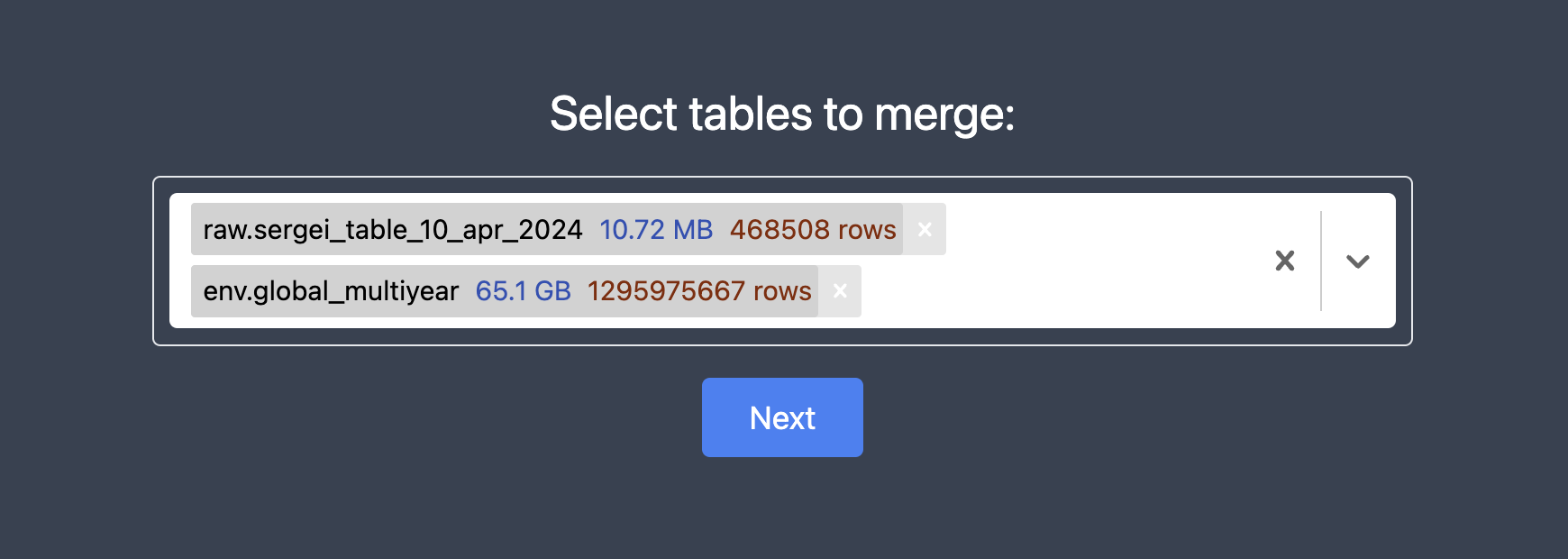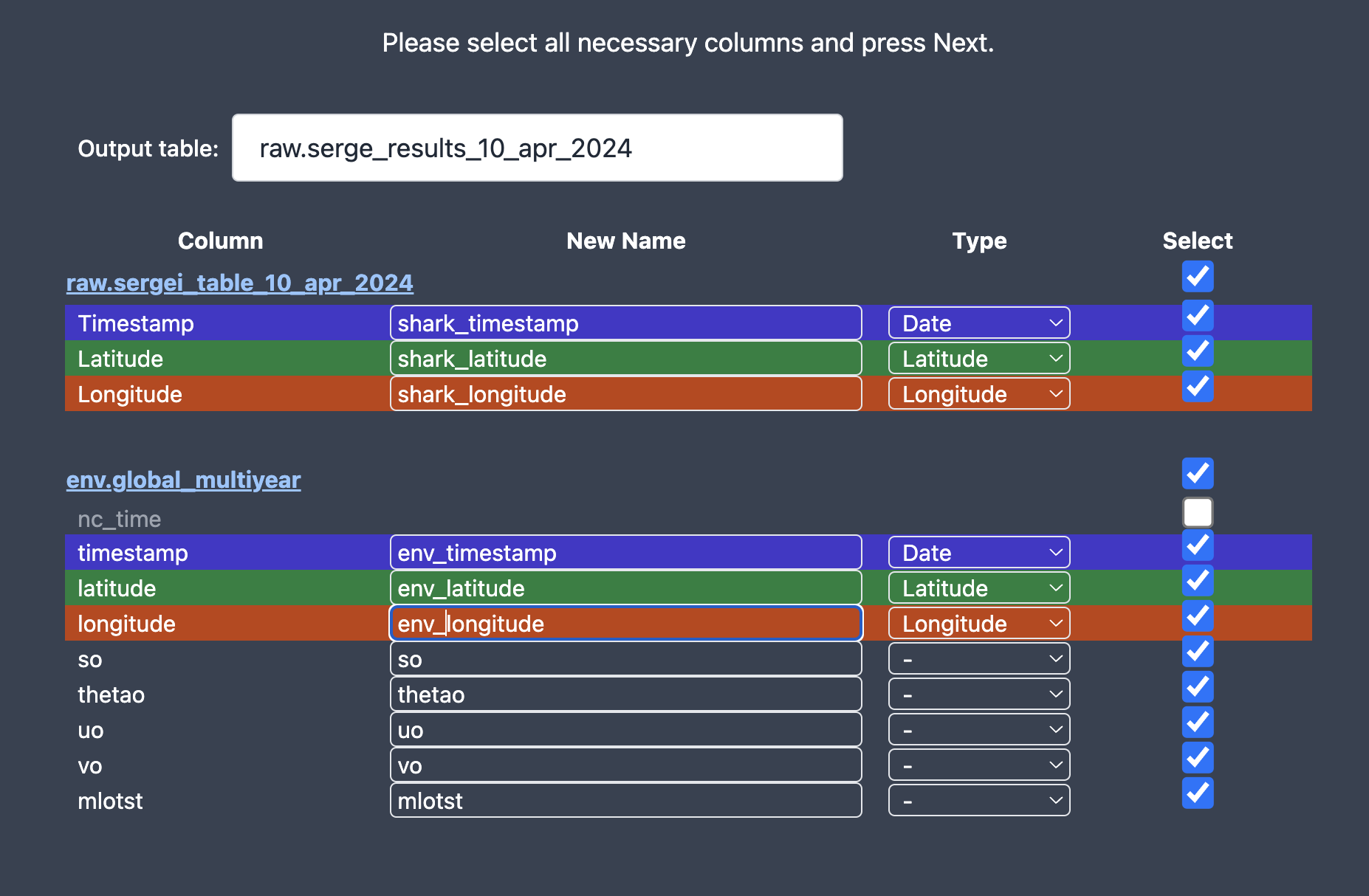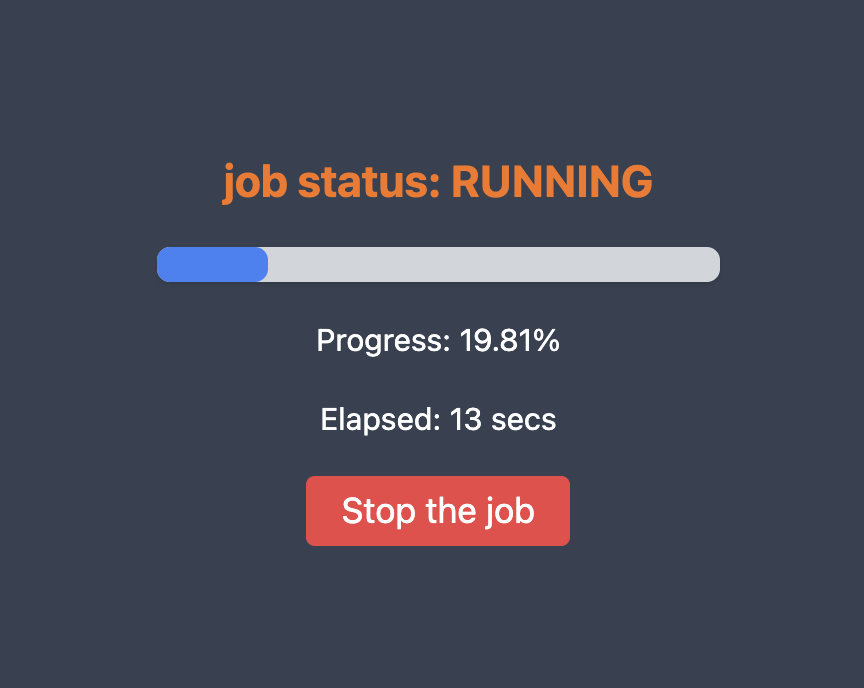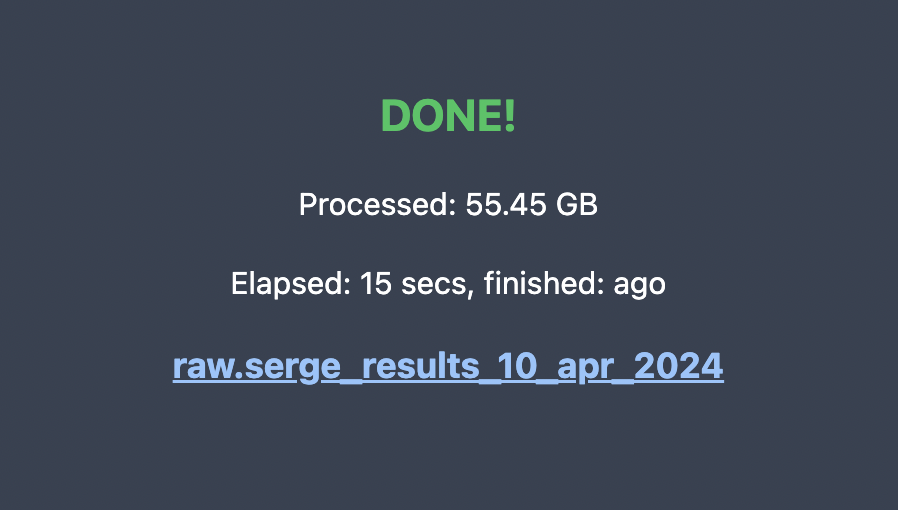Intro
- Observational data (e.g. 30MB of your shark trails) expected to have key columns
latitude, longitude and date (and any other non-key columns).
- Envirounmental data (e.g. 100GB of chlorophyll levels from Copernicus) expected to have key columns
latitude and longitude (and any other non-key columns).
The output table would have observational data (all the rows) and for each row we find nearest location (geo distance) from envirounmental data.
We use Google BigQuery as an underlying engine to perform this join.
1. Upload your observational data to wildflow
Make sure you uploaded your observational data file to Wildflow. You can go to the Datasets tab and click on the + button and drag and drop your file there.
For now it only supports CSV format. It only supports ISO date time (or
anything Google BigQuery supports). E.g 2000-10-31 23:30.
 Please specify the file name and make sure all the columns have correct names. File name should start with
Please specify the file name and make sure all the columns have correct names. File name should start with raw. for now (it’s a name of the dataset/collection of tables in BigQuery).
 Proceed to upload your table.
Proceed to upload your table.
2. Enable environmental data
If you need your dataset available in wildflow, please contact us via WhatsApp or Discord.
Please provide us the name of the dataset, e.g.: https://data.marine.copernicus.eu/product/OCEANCOLOUR_GLO_BGC_L4_MY_009_104
3. Select tables to merge
Navigate to the Workflows tab and select tables you need to join:
-
First choose your observational data (e.g. trails of your shark) and then choose large dataset (like chlorophyll levels).
-
You can select as many environmental tables as you want.

3. Select result columns

- Select only those columns you need.
- Make sure name of each column is unique.
- Specify name of the resulting table.
- Merge will be happening based on the column
Type
- For now we don’t support depth, but it should be easy to add.
4. SQL code
Now you should be able to see the SQL code generated to join these tables:
 Feel free to save it for future experiment reproducibility.
You can run this in the Google BigQuery console.
Feel free to save it for future experiment reproducibility.
You can run this in the Google BigQuery console.
5. Merge
When you continue the query will be executed:
 You can see most recent jobs here: Jobs.
And it should finish with a few minutes:
You can see most recent jobs here: Jobs.
And it should finish with a few minutes:
 Now you should be able to see a new table with merged observational and environmental data.
Yay! 🐳
Now you should be able to see a new table with merged observational and environmental data.
Yay! 🐳
6. Advanced Users
If you have a timestamp format that is not supported by BigQuery (06/05/18 10:14 but you need 2018-05-06 10:14), you can run this adhoc query to create raw.test_table from gs://bucket-name/uploaded/Table_2024-04-10T16:59:21.145Z.csv.
load data overwrite raw.test_table (
Timestamp string,
Latitude float64,
Longitude float64
) from files (
format = 'CSV',
uris = ['gs://bucket-name/uploaded/Table_2024-04-10T16:59:21.145Z.csv'],
skip_leading_rows = 1
);
create or replace table raw.test_table as (
select parse_timestamp('%d/%m/%y %H:%M', Timestamp) as Timestamp,
Latitude,
Longitude
from raw.test_table
);
select * from raw.test_table limit 10
 Please specify the file name and make sure all the columns have correct names. File name should start with
Please specify the file name and make sure all the columns have correct names. File name should start with  Proceed to upload your table.
Proceed to upload your table.


 Feel free to save it for future experiment reproducibility.
You can run this in the Google BigQuery console.
Feel free to save it for future experiment reproducibility.
You can run this in the Google BigQuery console.
 You can see most recent jobs here: Jobs.
And it should finish with a few minutes:
You can see most recent jobs here: Jobs.
And it should finish with a few minutes:
 Now you should be able to see a new table with merged observational and environmental data.
Yay! 🐳
Now you should be able to see a new table with merged observational and environmental data.
Yay! 🐳

